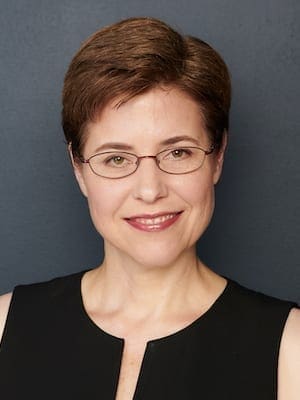Partnerships between the government and nongovernmental organizations, including faith-based groups, can be financial or nonfinancial.
Nonfinancial partnerships are ones in which no money passes hands from the government to the religious organization, but the two parties nonetheless work together toward a common goal.
For example, some congregations and community groups sponsor jobs clubs. Jobs clubs help unemployed or underemployed people develop interview and résumé-writing skills, make connections for new job opportunities and receive support for their job search.
As a 2014 White House report noted: “These employment support groups, which are typically run by volunteers and led by peers in familiar community settings, are well-positioned to engage long-term unemployed individuals and other hard-to-reach populations.”
During the Obama administration, the federal government did not provide money to nongovernmental organizations to start or grow jobs clubs, but it did provide information about how to do so, materials on best practices and governmental resources for job seekers, as well as information about how to connect with other congregations and community organizations that are doing similar work.
In this way, the government and faith-based and community groups are able to work together to promote economic opportunity for all.
Efforts to treat diseases and prevent their spread are another area where faith and government join hands.
Sometimes, the work that nongovernmental entities do in this area is supported by federal dollars, but it also includes nonfinancial partnerships.
In 2014, the terrible Ebola virus emerged in West Africa. From the start, it was clear that a vigorous response would be required from medical professionals and government officials, including the military posted in that area.
To President Obama, it was also clear that the response from faith-based and humanitarian organizations and leaders would be crucial.
During this period, President Obama invited Dr. Kent Brantly and his wife, Amber, to the White House.
Brantly is one of the courageous doctors who treated Ebola patients as part of his work with a faith-based organization.
Tragically, while caring for his patients, Dr. Brantly contracted Ebola himself. He was airlifted to the United States, was treated and made a full recovery.
Shortly after Kent and Amber arrived at the White House, President Obama welcomed them to the Oval Office, shook their hands and listened to their stories and observations while a photographer captured the moment.
At the time, there was great fear and some hysteria about the disease. Many were scared about any interaction with Ebola survivors.
President Obama’s meeting with Kent, and the pictures and media stories that came out of it, were a teaching tool.
As The Washington Post said at the time, “That [President] Obama is willing to sit in a room with Brantly demonstrates that the leader of the free world believes [concerns about interaction with Ebola survivors] have no basis.”
Leaders from diverse medical, faith and humanitarian communities partnered with the Obama administration to counter misinformation about the Ebola virus and the stigma attached to Ebola survivors.
Working across lines of faith and government, teams created trainings on safe burial practices for use on the ground in West Africa, practices that respected religious practices and helped to contain the disease.
As President Obama later said, “When Ebola ravaged West Africa, Jewish, Christian [and] Muslim groups responded to the outbreak to save lives. And as the news fanned the flames of fear, churches and mosques responded with a powerful rebuke, welcoming survivors into their pews.”
Editor’s note: This article is an excerpt from “Faith in American Public Life” by Melissa Rogers. Copyright 2019 by Baylor University Press. Reprinted by arrangement with Baylor University Press. All rights reserved. The book is available for purchase here.
Melissa Rogers served as special assistant to President Barack Obama and as executive director of the White House Office of Faith-Based and Neighborhood Partnerships (2013-2017). She is now a visiting professor at Wake Forest University’s School of Divinity, and is the author of “Faith in American Public Life” (Baylor University Press, 2019).


